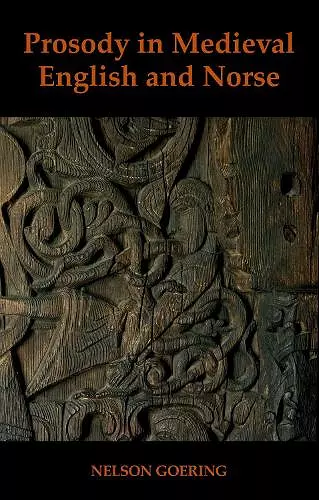Prosody in Medieval English and Norse
Format:Hardback
Publisher:Oxford University Press
Published:13th Apr '23
Currently unavailable, and unfortunately no date known when it will be back
This hardback is available in other editions too:
- Hardback£80.00(9780197264546)
- Hardback£100.00(9780197264522)
- Hardback£95.00(9780197265802)
- Hardback£85.00(9780197267066)
- Hardback£95.00(9780197267257)
- Hardback£70.00(9780197267301)
- Hardback£75.00(9780197267226)
- Hardback£90.00(9780197260296)
- Hardback£100.00(9780197260272)
- Paperback£20.00(9780197261002)
- Hardback£70.00(9780197260920)
- Hardback£80.00(9780197261132)
- Hardback£45.00(9780197258576)
- Hardback£105.00(9780197266892)
- Hardback£75.00(9780197267264)
- Hardback£60.00(9780197266748)
- Hardback£75.00(9780197267110)
- Hardback£108.00(9780197267431)
- Hardback£90.00(9780197267400)
- Hardback£95.00(9780197267417)
- Hardback£85.00(9780197267387)
- Hardback£70.00(9780197267424)
- Hardback£90.00(9780197267493)
- Hardback£100.00(9780197267509)
- Hardback£70.00(9780197267486)

How can we reconstruct the rhythms and cadences – the prosody – of past languages? Prosody in Medieval English and Norse approaches this problem by comparing two closely related languages with a long written history in the Middle Ages. Through a series of case studies on vowel reductions and alliterative verse forms, Kaster identifies important continuities in the internal rhythmic structure of words and explores the enduring role of the bimoraic trochee. The main rhythmic building block of these languages, the bimoraic trochee, shapes both linguistic change and poetic structure. The bimoraic trochee played a defining role in the loss of many unstressed vowels that took place in English and Norse in the 6th and 7th centuries, and continued to influence vowel reductions in later English. In alliterative poetry, the bimoraic trochee explains previously opaque restrictions against using certain words in certain metrical contexts, especially the controversial Kaluza's law in Beowulf and Craigie's law in the Poetic Edda. Together, these case studies allow prosodic change and stability to be traced over time.
Goering's ambitious book effectively spans a broad chronological, geographic, topical, and poetic range in its pursuit of the history of the bimoraic trochee in early English and Scandinavian linguistics and metrics. * Mary Gilbert, Comitatus 55 *
Prosody promotes the advancement of knowledge in several ways. Goering's combination of linguistic and philological scrutiny deserves particular mention, since the two are far too often mutually exclusive in the study of a range of topics where only due attention to both can provide plausible answers. I would also single out his treatment of earlier scholarship as exemplary, communicating the main points in an accessible manner and clarifying strengths and weaknesses. * Mikael Males, SELIM Journal *
ISBN: 9780197267462
Dimensions: 240mm x 162mm x 25mm
Weight: 722g
390 pages